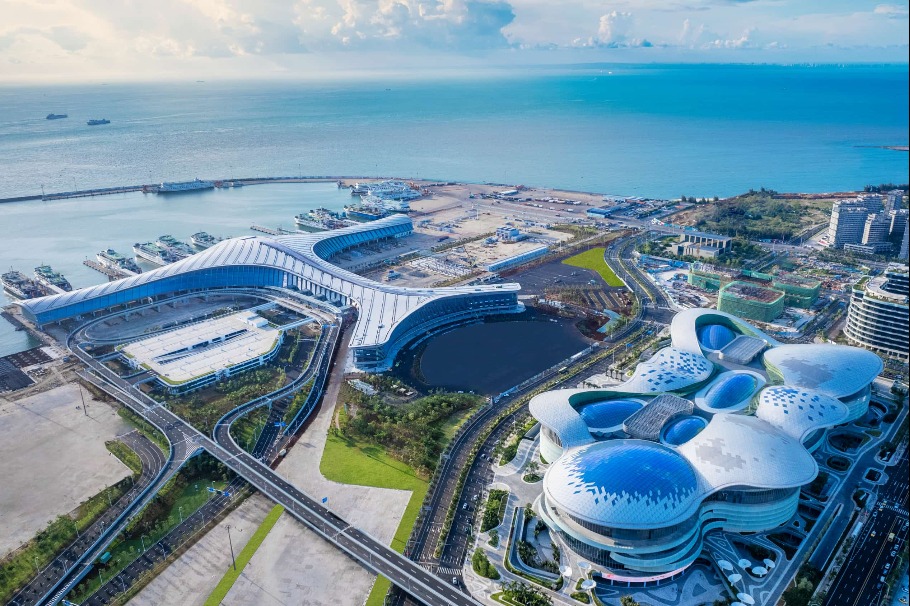Country remains an irreplaceable partner for ASEAN


China and Southeast Asian countries are bound by geography, culture and, increasingly, by a shared economic future. The two sides have forged a deeply intertwined partnership, with trade and investment forming a powerful engine for mutual development. China and the Association of Southeast Asian Nations have remained each other's largest trading partners for five consecutive years. In 2024, their bilateral trade reached more than $982 billion, a testament to the depth and dynamism of their cooperation. In the backdrop of progress in the advancement of China-ASEAN Free Trade Area 3.0 and the Regional Comprehensive Economic Partnership, the partnership is expanding into broader and deeper domains, injecting new vitality into regional economic integration.
Yet the global trade landscape was shaken earlier this year, when the US administration imposed "reciprocal tariffs". Such actions have disrupted global trade order and placed unprecedented pressure on export-dependent ASEAN economies.
Most ASEAN economies are export-oriented, and foreign trade remains their primary growth driver. Although China is ASEAN's largest trading partner overall, the US still plays a key role as a source of trade surplus for many Southeast Asian countries. These imbalances have provided Washington with leverage to exert pressure through tariff threats. For example, according to the US government, in 2024, Vietnam's trade surplus with the US rose to a record level, exceeding $123 billion, while Indonesia enjoyed a $17.9 billion surplus. Armed with this advantage, Washington wielded its "tariff stick", forcing ASEAN nations into difficult trade decisions and geopolitical dilemmas.
The resilience of China-ASEAN cooperation prevailed. In the first three quarters of 2025, the two sides' bilateral trade rose 9.6 percent year-on-year to 5.57 trillion yuan ($784.54 billion). ASEAN's share of China's foreign trade increased from 15.9 percent to 16.6 percent, underscoring the partnership's vitality. Despite temporary challenges, Vietnam and Indonesia, together with other ASEAN countries, chose pragmatism and deepening cooperation with China.
China remains an irreplaceable partner for ASEAN. It is the region's largest market, the central hub of its supply chains and a crucial trade corridor to Central Asia and Europe. Take Vietnam as an example. Nearly one-third of the country's agricultural and aquatic exports go to China, and this share continues to rise. More importantly, China's supply chains underpin Vietnam's exports to Western markets, while cross-border rail links and the China-Europe freight trains enhance ASEAN's access to global trade routes that the US cannot offer.
Since establishing dialogue relations in 1991, the China-ASEAN partnership has evolved steadily from a strategic partnership to a comprehensive strategic partnership. Guided by the principles of amity, sincerity, mutual benefit and inclusiveness, China emphasizes dialogue and mutual respect rather than imposing its will on others. This approach provides ASEAN countries with stability and confidence.
Under the upgraded China-ASEAN Free Trade Area and RCEP frameworks, over 90 percent of traded goods will soon enjoy zero tariffs, with most remaining tariffs below 3 percent.
ASEAN's pragmatic realignment is a rational choice amid global uncertainty and a strong response to unilateralism and protectionism. Through flexible diplomacy, Southeast Asian countries have avoided direct confrontation with the US while strengthening mutually beneficial ties with China. Their balanced approach reflects a clear understanding of national interests and the wisdom of maintaining autonomy in a multipolar world.
Following the conclusion of the 2025 APEC meeting, the prospects for China-ASEAN cooperation remain strong. The outcomes reinforced the importance of mutual respect, reciprocity, and rules-based engagement, confirming that regional integration continues to unlock new potential. Guided by shared interests and a commitment to pragmatic collaboration, China and ASEAN are poised to advance economic integration, deepen trade and investment ties, and jointly navigate global uncertainties. The meeting underscored that cooperative, inclusive and forward-looking strategies will be key to sustaining shared growth and opening a new chapter of regional prosperity.
The author is director of the Center for China's Relations with Neighboring Countries at Fudan University.
The views don't necessarily reflect those of China Daily.
If you have a specific expertise, or would like to share your thought about our stories, then send us your writings at opinion@chinadaily.com.cn, and comment@chinadaily.com.cn.


































